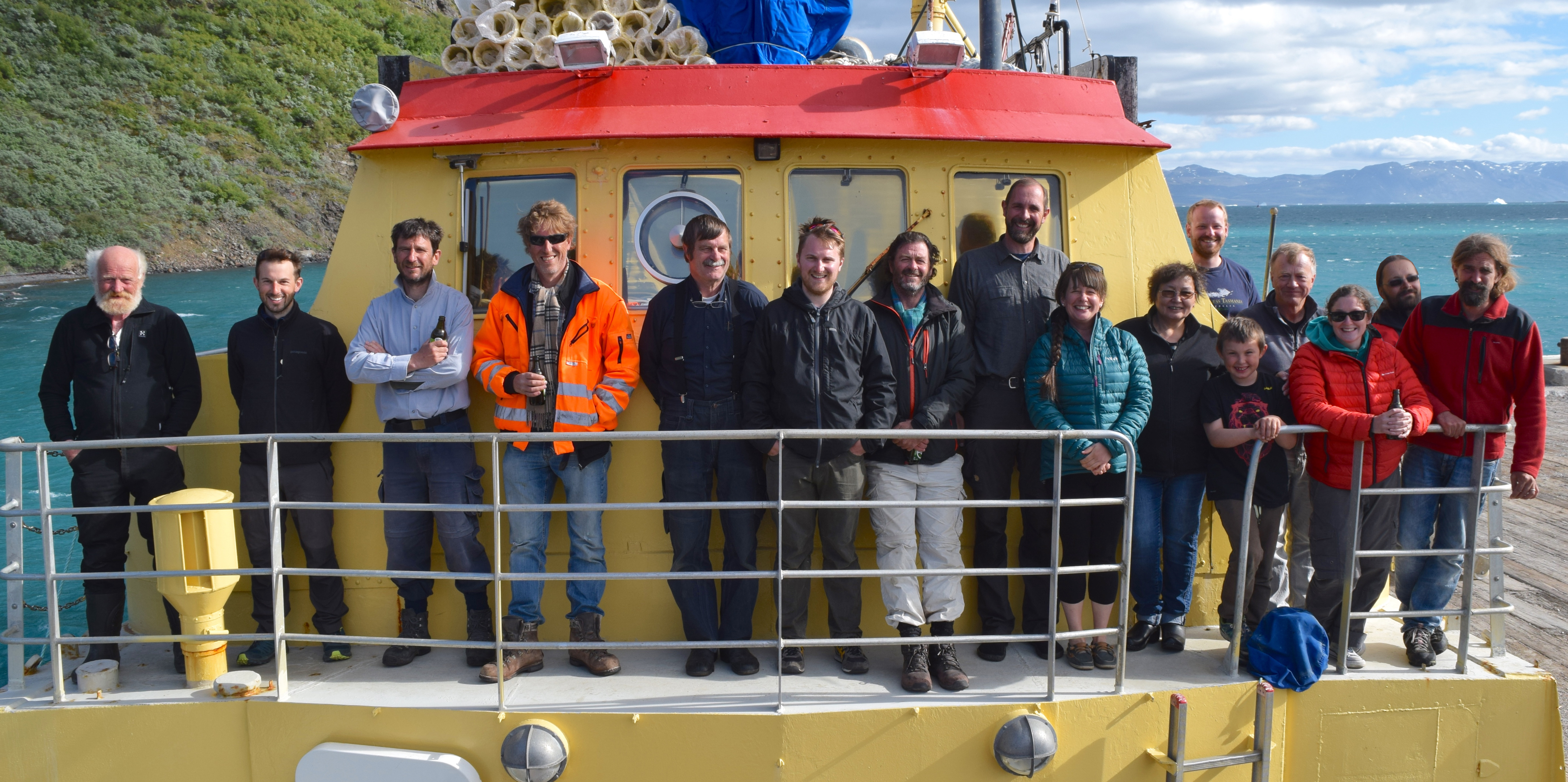The ‘Gardar Province’ is the name given to a suite alkaline igneous rocks associated with Continental Rifting in Southern Greenland in mid-Proterozoic times. The rifting occurred in two cycles, termed ‘Early’ and ‘Late’ Gardar, with early rifting occurring in the period 1320-1270 Ma and Late Gardar rifting ~100 Ma later (1180-1140 Ma). Both events are linked to the break-up of the Columbia Supercontinent.
The Gardar Province includes eruptive rocks (with interbedded clastic sediments), numerous dykes and diatremes, so-called ‘Giant Dyke’ complexes (dyke-like bodies up to 1 km wide and partly traceable >100 km along strike) and a series of subvolcanic central complexes. The region is considered a fossil equivalent to e.g. present-day magmatism in the East African rift. The Gardar eruptive rocks are called the ‘Eriksfjord Formation’ and comprise lavas, pyroclastic rocks and interbedded clastic sediments (usually arenite). The volcanic component to the Eriksfjord Formation is mostly basaltic lava and pyrsoclastic rocks, but at Qassiarsuk it includes carbonatite ash, lapilli tuff and lava and around Narsaq and Sitdlisit it is represented by mela-ailikitic compositions.
Gardar diatremes are preserved North of Narsarsuaq and around Narsaq. These typically host a mix of Gardar lamprophyre and carbonatite clasts alongside local brecciated basement, quartzite and basalt and they may be feeder structures that contributed to the formation of the Eriksfjord Formation.
Gardar dykes represent contemporary samples of evolving magma beneath Southern Greenland, emplaced as dyke swarms whose orientation reflects contemporary extension directions. Early Gardar dykes are typically NW-SE and primitive in composition (basalt, basaltic andesite, andesite), known locally as the ‘Brown Dyke’ (BD) suites. Late Gardar dykes are typically on a 60° strike and demonstrate a range of compositions from very primitive compositions (basalt, lamprophyre, carbonatite) through to highly evolved (trachyte, phonolite, rhyolite) and peralkaline residua.
Each subvolcanic central complex comprises a series of magma pulses, now represented by nested, cross-cutting intrusive units whose composition often changes with time. Some complexes (e.g. Igaliko) are recognised to comprise distinct volcanic centres which overlap in space but were separated in time. It is inferred that major volcanic constructs once existed above current exposure and that ~3-5 km of overburden has been removed since Gardar times. The current geology of the Gardar therefore provides dissected cross-sections through subvolcanic plumbing systems, providing direct evidence for processes occurring today 3-5 km below the surface in East Africa. The extraordinary exposure, the three-dimensional cross-sections through geological structures and the range of compositions make the Gardar Province an exceptional natural laboratory to study magmatic processes.

Figure 1_101. The Gardar Province, Southwest Greenland.
HiTech AlkCarb work in Southern Greenland focussed on two regions: Motzfeldt and Ilimaussaq. Both regions have been the focus of exploration for Rare Earth and High Field Strength elements such as Zr, Nb and Ta. HiTech AlkCarb activities included the analysis of the roof zones to the complex by the St Andrews group. The tops of the magma chambers (the ‘roof zones’) are preserved in both regions and this is considered important in the genesis of some of the resources. Roof zones are complex regions in which compositional and thermal gradients are established, creating atypical environments with promote crystallisation. The Tübingen Group have been looking at magma chamber processes including the behavior of volatile elements (halogens and sulfur) during magmatic differentiation processes.
HiTech AlkCarb research included a visit to Southern Greenland which focussed on three aspects of the Gardar Province: 1. Magma Chamber processes (particularly important in the formation of the Kringlerne Deposit, Ilimaussaq and the Ti-V deposits at Isortoq); 2. Roof Zone processes (important at Motzfeldt and the Kvanefjeld region, Ilimaussaq) and 3. Volatile behaviour in melt systems (important at Ivigtut and Ilimaussaq). The trip made sure to compare and contrast mineralised systems with their non-mineralised counterparts and included visits to non-mineralised systems at Nunarsuit and Qassiarsuk.

Some of the HiTech AlkCarb team on fieldwork in the Gardar province, Southern Greenland 2017 (L-R, First mate; Sam Weatherley, Adrian Finch, Paul Bons, Anders, Will Hutchison, Pete Siegfried, Gregor Markl, Emma Humphreys-Williams, Ellen, Ben Walter, Inouk, Tom Andersen, Eimear Deady, Jindrich Kynicky, Michael Marks).
Recent publications on/including the Gardar Province by HiTech AlkCarb members:
Finch et al., 2019 From Mantle to Motzfeldt: A genetic model for syenite-hosted Ta,Nb-mineralisation, Ore Geology Reviews
Marks, M A W, & Markl, G. 2017 A global review on agpaitic rocks, Earth-Science Reviews
